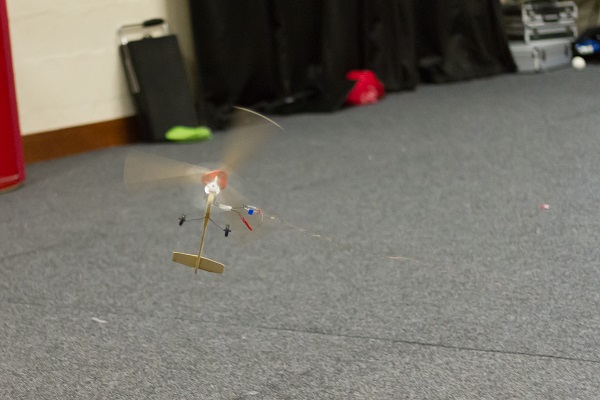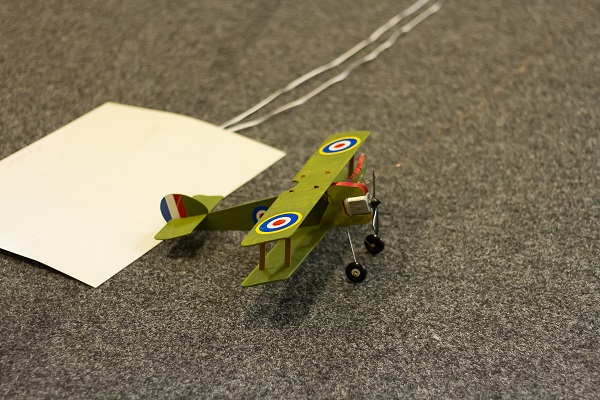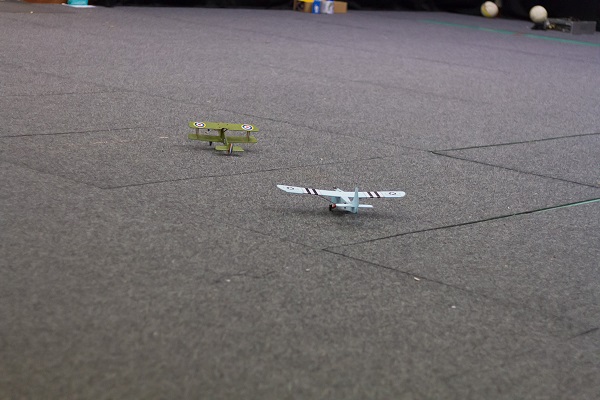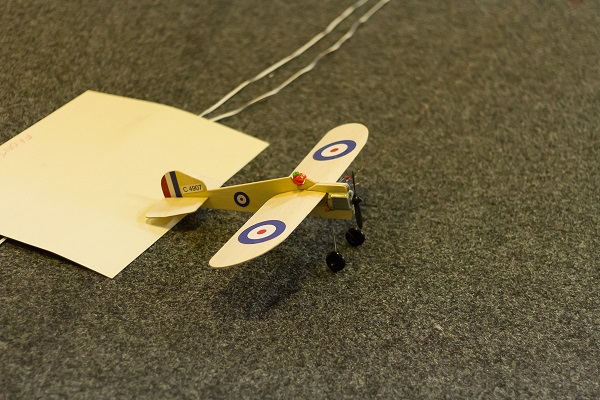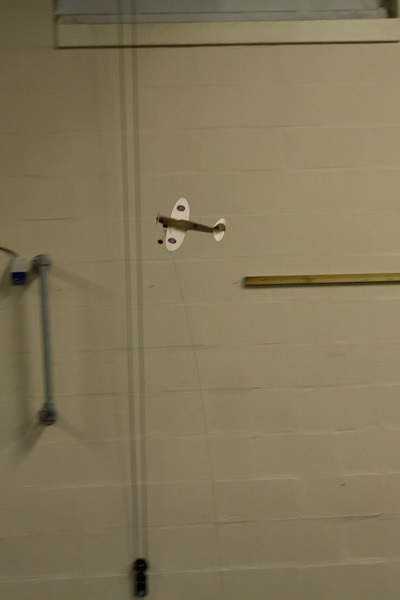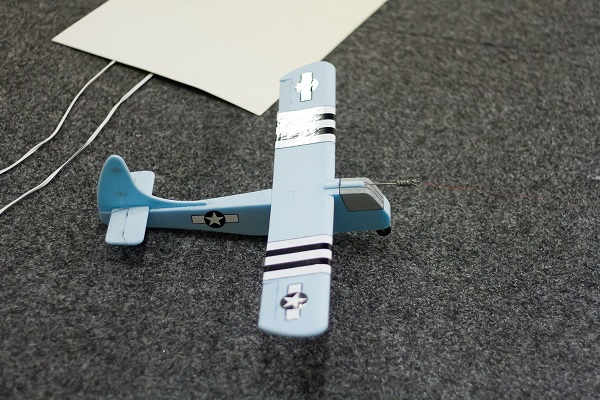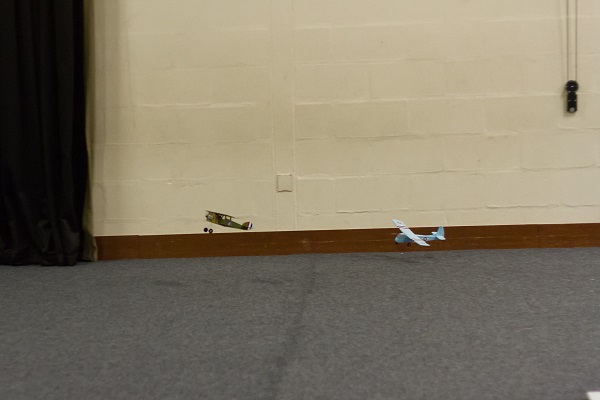|
Christchurch and District Model Flying Club |
|
[Home] [Chairman's Chatter] [Rosebowl] [RTP Report] [Hurricane] [Before I forget] [Malcolm] [Albatross] [Tailpiece] |
|
RTP Revival By Trevor Hewson
As part of the club’s Golden Jubilee programme in 2016, Peter Chaldecott gave an excellent talk on the club’s history. This included reference to electric round-the-pole (RTP) flying which used to take place in Stanpit Village hall. By way of illustration, Peter held aloft my battered old Barnstormer RTP model (which was published as a free plan in the December 1998 edition of Sloping Off) and, as Peter told the story, it became clear that the RTP concept was new to many members and it provoked quite a few questions. By request, Peter repeated the talk in the Summer of 2017 and again the RTP section of the talk stirred quite a bit of interest. By then I had stumbled across the fact that, although the main supplier of RTP gear back in the day (Ballards) had long since ceased to exist, the equipment and models were still available from the RTP Hut. After making a few enquiries about the level of interest and the cost of equipment, I asked Terry and the committee whether they would consider the idea of re-investing in a new set of RTP equipment - the old system does still exist but, modern H&S legislation being what it is, it was deemed unwise to try to resurrect it! The proposal was agreed, so in August a starter kit was ordered at a cost of £287. As well as all the equipment, this included six model kits. Two of these were retained as club models, the other four being sold on to members to help defray some of the cost. As the word got around, other members decided to join in and another order was put together and more kits and motors were bought and distributed. So, as August drew to a close, the equipment had been delivered and checked out, the models had been built (well, most of them, there’s still a kit or two out there - you know who you are!) and Terry had organised an appointment to get into the school hall at Durlston for a test and setup session before the start of the indoor flying season. So everything was looking good. Then I slipped another disc in my back. For me then, it was a painful and less than auspicious start to the new RTP era. Thankfully Malcolm, Terry, Jon, Alex and others stepped up and ran the first session in my absence. By the second meeting I was sufficiently mobile to hobble along and participate but, before proceeding any further, I would like to record my thanks for the support of these people, not only in running that first session but for helping out throughout the season in so many ways. The Concept So, what is RTP? Electric power from a transformer is fed through a central pole, through ball raced bearings and out along enamelled copper wires to the aeroplane. In some ways, it’s best thought of a Scalextric for aeroplanes. The only control you have is a hand held throttle, every other aspect of the model’s performance is determined by trim and setup adjustments. Also, like Scalextric, you can fly one model at a time or, for additional excitement (and carnage!) fly two in the circuit together. The illustration shown is from the RTP Hut website and shows an old style resistive hand controller. We used to use these on the old setup and they could get very hot (partly because they were designed for 12v operation and running on over 20v !). The new system uses solid state controllers. These run cool and seem to be reliable. However, control is by a rotary knob rather than squeezing a plunger which works perfectly well but somehow seems less exciting - more reminiscent of a train set rather than car racing, perhaps.
The Experience Over this first season, a surprising variety of models have been flown. The ones built from the RTP Hut kits have generally performed well enough but, considering they are all variations on the ‘profile fuselage, solid sheet wing’ concept, there are surprisingly wide differences in how they handle. Some can be trimmed to fly quite high at modest speed, others seemingly reluctant to climb above four or five feet. They do though represent an excellent starting point and enable newcomers to get to grips with the effect of changing elevator trim and also that all-important trimming device, unique to RTP, the positioning of the tether hook. Subtle bends of the hook can have a big influence on many aspects of the models behaviour such as how it taxies on the ground, the bank angle during flight, and how well it holds line tension at different altitudes and speeds. What has been most encouraging has been the number of modellers moving on from these starter kits to trying their own designs. Some of these have been highly innovative and/or ambitious and have sustained a high level of interest not only amongst the flyers but also amongst those who, whilst not yet having dipped their own toe in the RTP pool, chose to stay on after the end of the R/C session to see how these various creations would fare. Over the season we have seen fixed wing mono and biplanes, a twin engined mosquito two Fokker triplanes and an autogyro. Not content with all that, scale glider towing (yes, with a scale troop carrying glider!) has also been tried. This project is still though, after the best part of a season’s endeavour, still best described as a work in progress.
As for the kit, well we have learned that the smaller Sparrow motors supplied with these kits really will burn out if used on the higher of the two power settings on the transformer - on one evening we managed to burn out at least three of them in quick succession. Since then though, I can’t recall any further failures so either we had a poor batch of motors or we have learned how to manage the power better. For those who still can’t resist the urge for speed though, we have also found an alternative source of similar motors for £1 each, delivered free of charge. From China of course! The pole, lines, transformer and controllers are still in working well at the end of the season and the two club models are still airworthy, thanks to the ministrations of a few helpful members along the way - and a replacement propeller or two. The Future? With the current level of interest, the format of holding an RTP hour at the end of the indoor R/C evenings has worked out well so I imagine we will start next season in a similar vein. However, now that we are holding club meetings in the larger hall at Bransgore, we do have the possibility of flying RTP there on a club night. This would require making up a shorter set of lines (and we might have to do a risk assessment on the possibility of ceiling damage!). At the moment though, unless people get serious withdrawal symptoms over the summer, my personal view is that this is probably not worth pursuing further at the moment. So, when you’ve had your fill of gardening in the summer sun and the evenings are beginning to draw in, just type “The RTP Hut” into Google (or go straight to http://www.thertphut.co.uk ) and see what takes your fancy. Or, if you still don’t believe that anything so cheap and simple really can have anything to offer, just drop in on our first indoor session in September - if only for a laugh! |
|
[Home] [Chairman's Chatter] [Rosebowl] [RTP Report] [Hurricane] [Before I forget] [Malcolm] [Albatross] [Tailpiece] |


